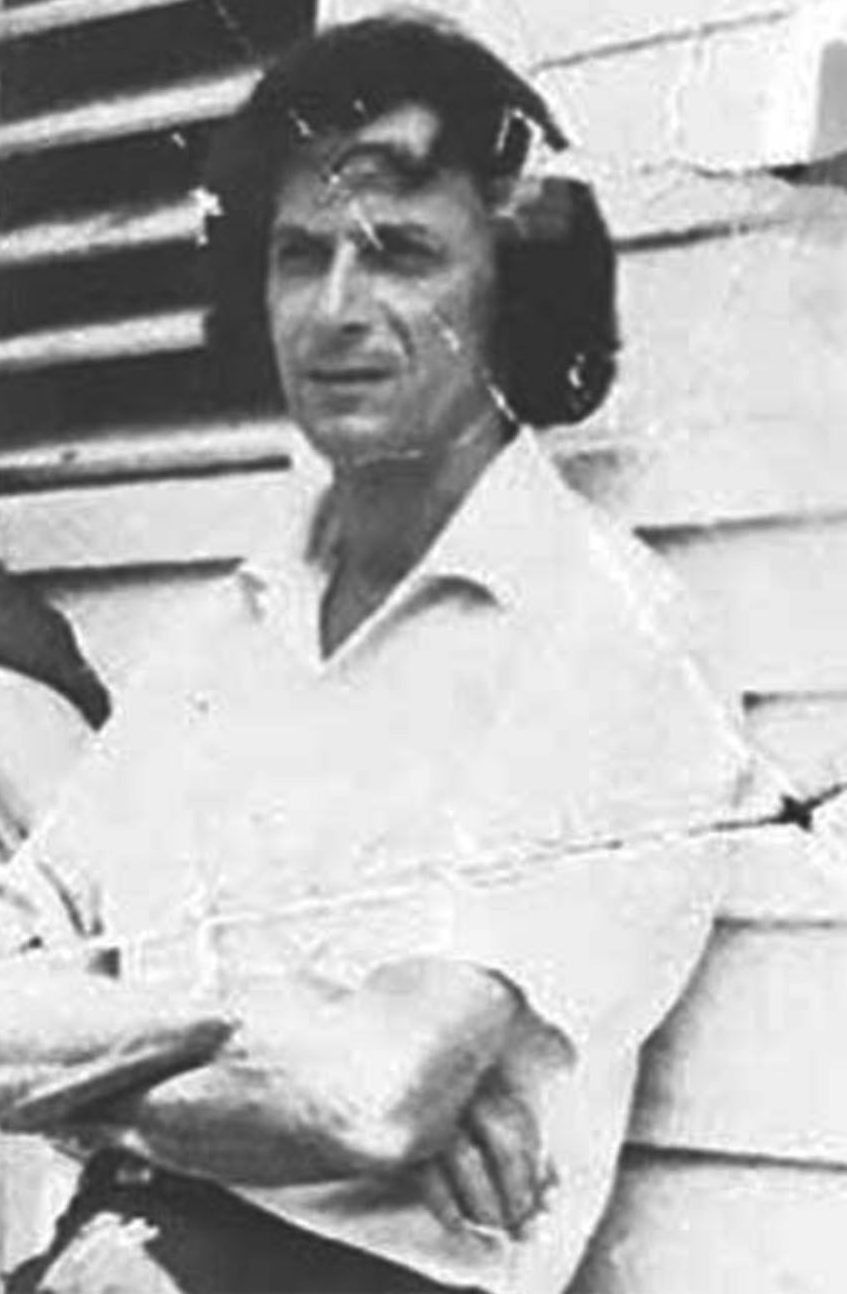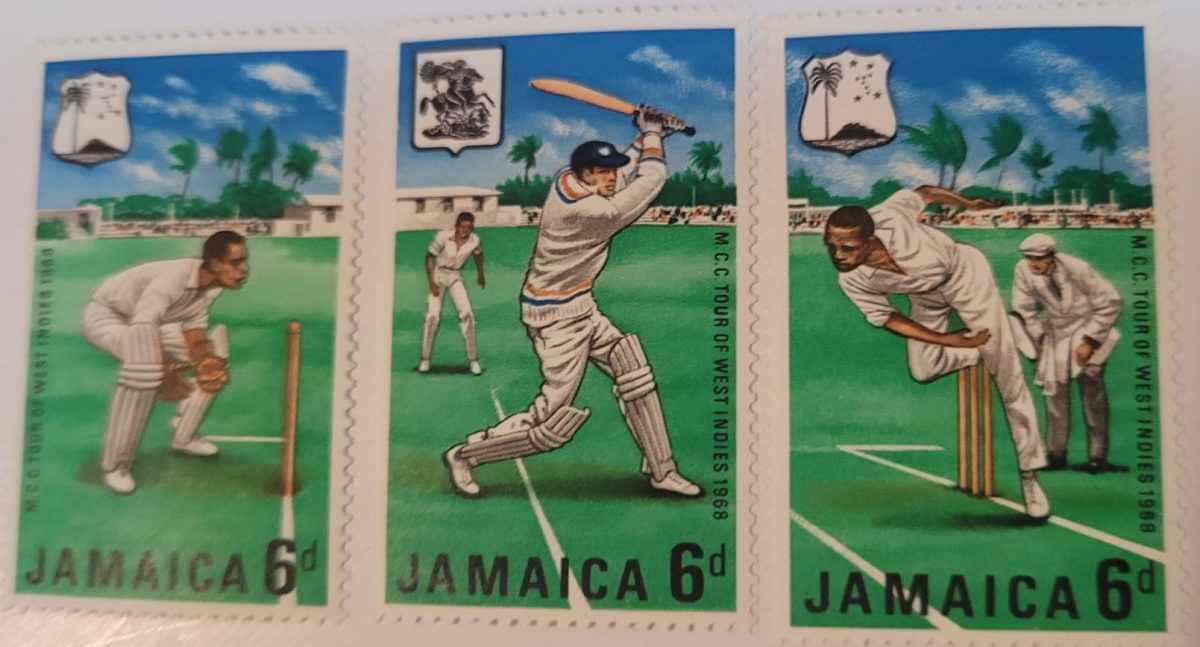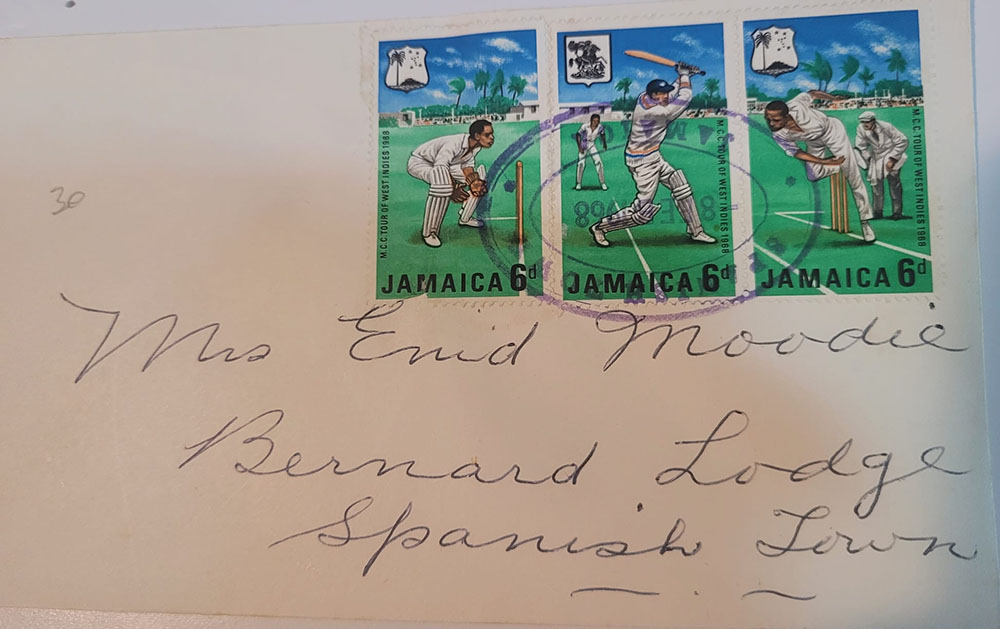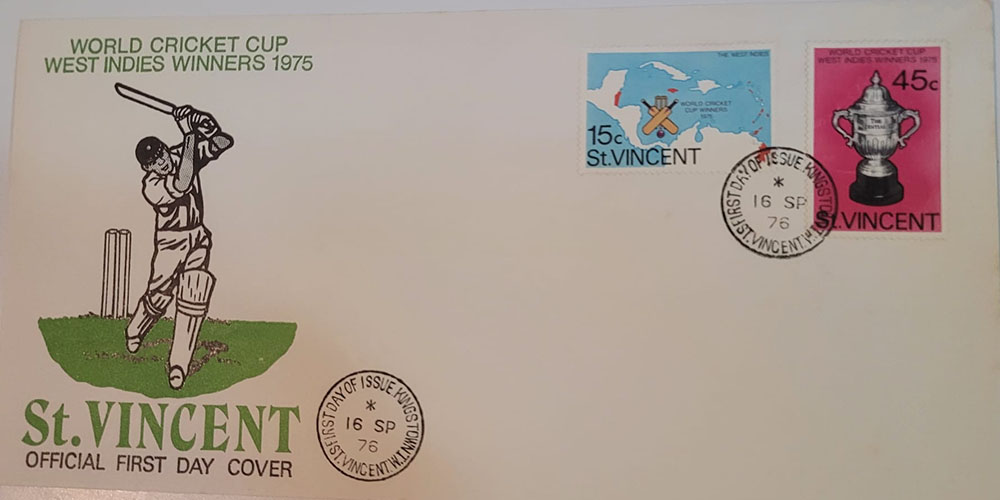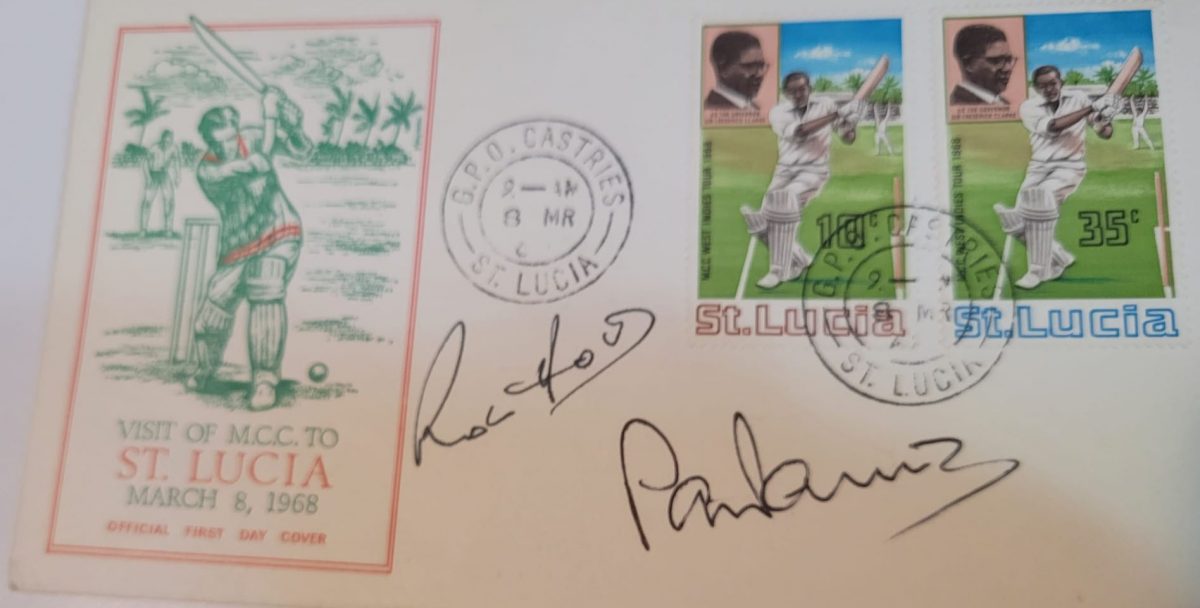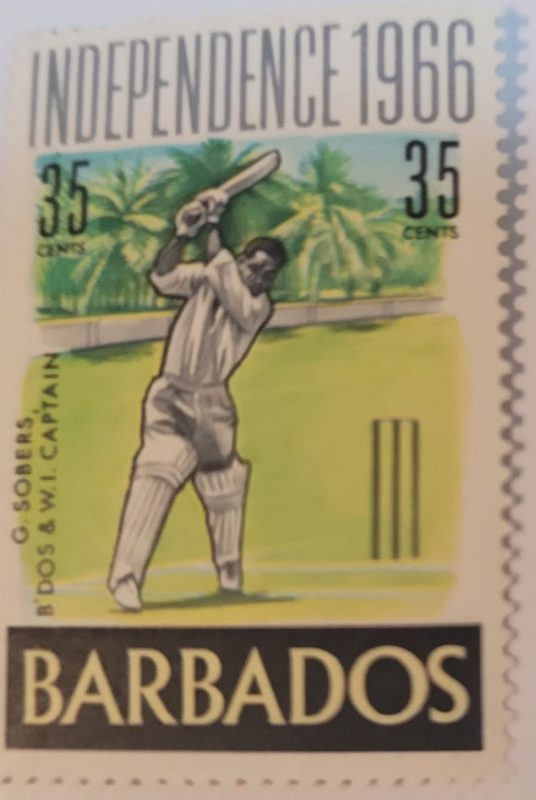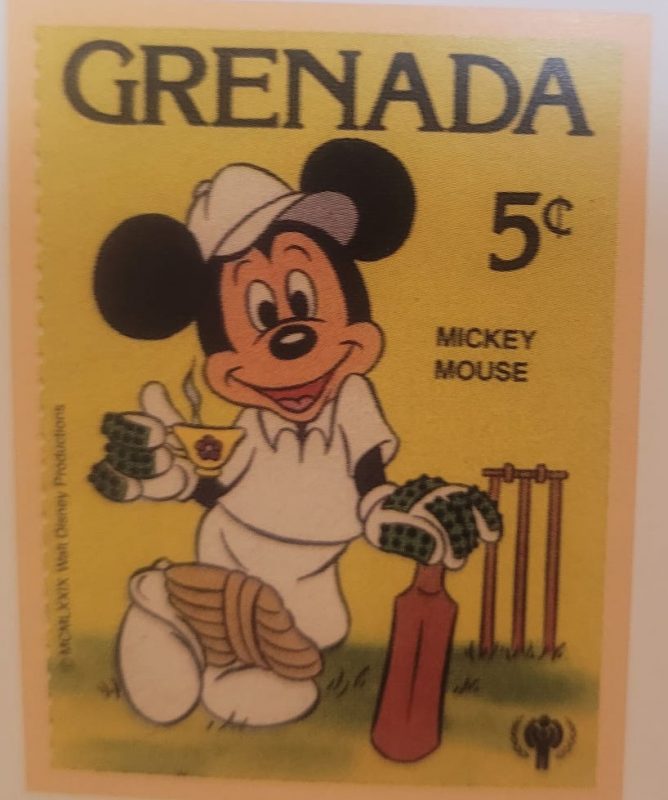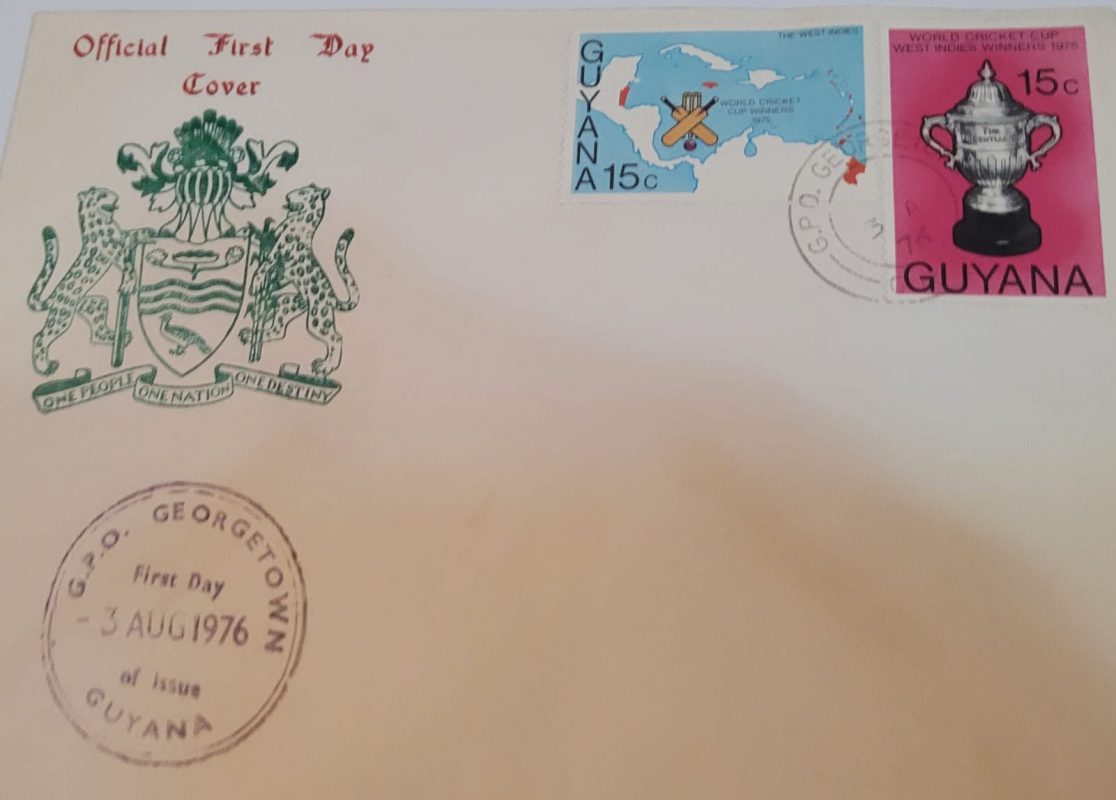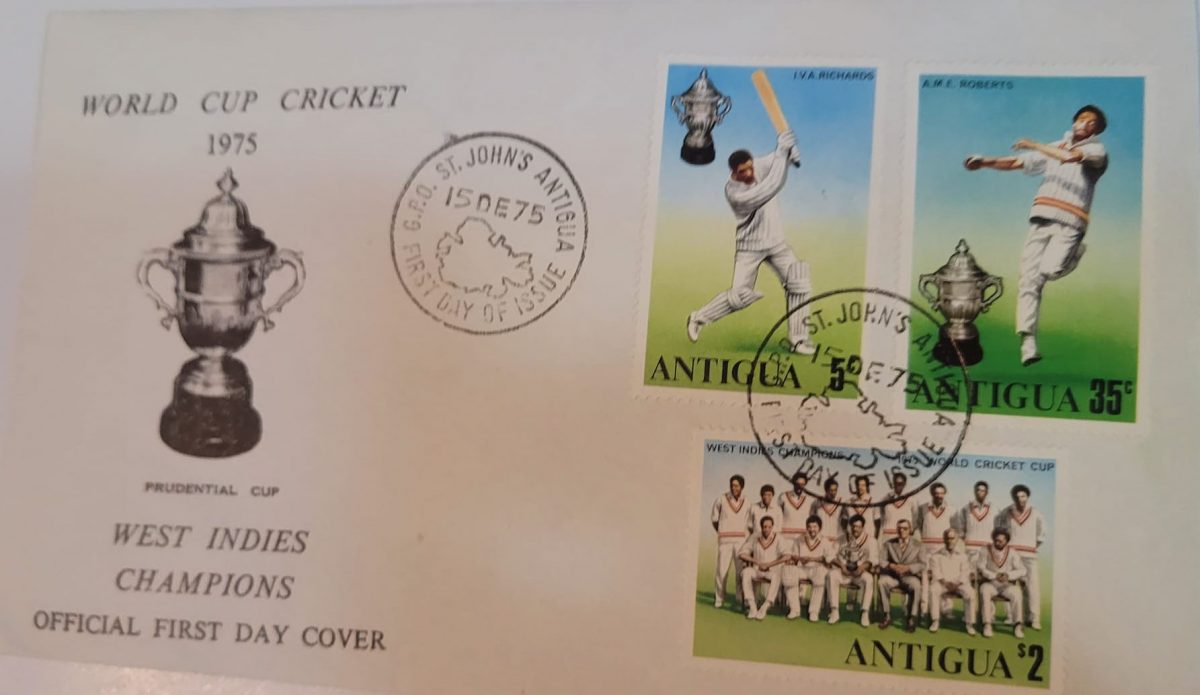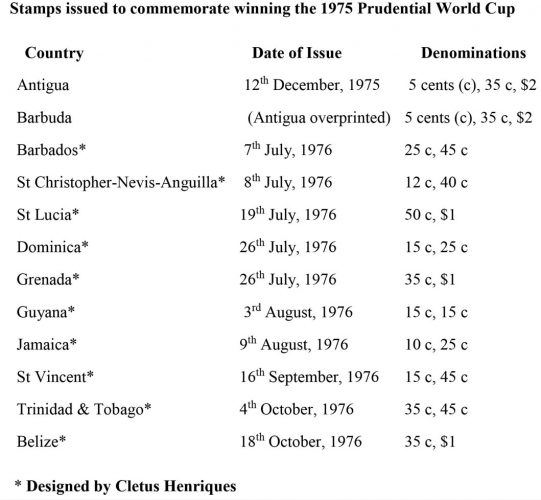Today, it seems as though every international cricket tournament or Test series is acknowledged by the host nation’s postal services issuing yet another first day cover and special souvenir packs of stamps, much to the delight of philatelists and serious collectors of cricket memorabilia. It wasn’t always like this. In fact, it wasn’t until 1962 that the world got its first postage stamp on the subject of cricket, issued by, of all places, Cape Verde Islands, the former Portuguese colony, located 660 kilometres off the coast of Senegal on the West Coast of Africa, where cricket was virtually unknown.
Over the next 17 years, stamps paying tribute to the game continued to trickle out at a relatively slow pace, and by the summer of 1979, only 75 stamps had been released in 38 separate issues by 24 territories, including all the (then) Test playing countries, and diverse places such as New Caledonia, a French Overseas Territory in the South Pacific, and Sharjah on the Persian Gulf (which later served as a venue for nine Pakistan Test matches [2002 – 2016] and has staged the most ODIs, 247, as of June, 2023). Surprisingly, more than half of these stamps were issued by territories in the West Indies.
First stamp
When Barbados attained independence on the 30th November, 1966, four stamps were issued to commemorate the occasion. One of the stamps, which were released on the 2nd December, 1966, featured the island’s most famous cricketer, the world’s leading all-rounder, Garry Sobers, playing a flowing cover drive. The stamp was designed by Victor Whiteley (1922 -2002), an Englishman and one of the premier Commonwealth stamp designers, who was credited with almost 500 creations in a portfolio of diverse subjects covering innumerable territories.
The first set of stamps dedicated solely to honouring the game in the West Indies was released by the Guyana General Post Office on the 8th January, 1968, to commemorate the visit of the Marylebone Cricket Club (MCC), the banner under which England touring teams appeared until 1977. The three stamps, also designed by Whiteley, were printed on a horizontal strip to form a composite scene of a match featuring intentionally unidentifiable players; a West Indies wicket-keeper, an Englishman batting, and a West Indies bowler. The three stamps were released in denominations of five cents, six cents, and 25 cents, respectively. The MCC Tour commenced in Barbados in late December 1967, and the Tour party did not arrive in Guyana until March. The same stamps were also issued by Jamaica on the 8th February, 1968, the first day of the Second Test match, with all three having the same value of 6d – sixpence. The issuing of stamps on the first day of Test matches has since become standard practice in the Caribbean, by the respective host country.
A third set of stamps commemorating the English tour, also designed by Whiteley, was issued by St Lucia on the 8th March, 1968, the first day of the match between the Windward Islands and the MCC at Victoria Park, Castries, St Lucia. The stamp, issued in two denominations of ten cents and 35 cents, featured a batsman playing a pull shot, along with an inset of a portrait of Sir Frederick Clarke, then president of the St Lucia Cricket Board and a member of the West Indies Cricket Board. Sir Frederick, who had captained St Lucia in the Windward Island tournaments in the 1940s and the 1950s, also served as the island’s speaker of the House of Assembly and its first native governor upon attainment of associated statehood in 1967.
On the 1st August, 1969, under the title ‘Celebration of Cricket’, Grenada released a set of four stamps in three, ten, 25 and 35 cents’ denominations. The very colourful stamps all featured batsmen and were designed by M Shamir and L W Denyer. On the 26th November, 1969, Dominica followed its Windward Island counterparts, St Lucia and Grenada, and released a single stamp designed by De La Rue and Co Ltd. The 38 cents stamp featured boys playing cricket at the Grammar School in Roseau, (the island’s capital), within a large ornate letter D with a portrait of Her Majesty Queen Elizabeth II.
Antigua was the first of the Leeward Islands to join the fray, when it released a set of three stamps on the 15th December, 1972, to commemorate the 50th anniversary of the Rising Sun Cricket Club of Antigua. The trio were issued in denominations of five cents, 35 cents and $1, and displayed a batsman playing an on-drive and a map of Antigua, a batsman cover driving whilst watched by a wicketkeeper, and the emblem of the Rising Sun CC, respectively. The Rising Sun stamp incorporated a laurel wreath design with 1922 – 1972 inset, and a portrait of Her Majesty Queen Elizabeth II. The club was founded by Clemenceau A Perry, whose name appears on the $1 stamp, on the 22nd February, 1922.
All three stamps were designed by the prolific stamp designer Julian Vasarhelyi (1929 – 2013), who was born in Hungary and eventually settled in England in 1965, where he designed 7,500 stamps for 165 countries.
When the West Indies won the inaugural Prudential World Cup Tournament in June, 1975, a decision was taken at the Caricom Council of Ministers held in Jamaica in early July 1975 that a special stamp should be issued throughout the region to commemorate the West Indies’ triumph. The communique issued after the meeting stated, “Council noted the outstanding achievement of the West Indian cricket team in winning the first-ever World Cup cricket series.
“It considered this achievement to be a symbol of the unity of the region and an indication of the potential of regional cooperation as a vehicle for projection of the region internationally.
“It agreed that there should be a special commemorative stamp issue throughout the Caribbean Community in recognition of this outstanding achievement.”
The repeat triumph in 1979 was never honoured with the issue of a set of stamps.
Twenty-six stamps were issued by 12 territories (see box), including Belize, in a show of solidarity, although it is not associated with West Indies cricket. Antigua started the ball rolling, releasing its set of three stamps, which featured the first two sons of the soil to represent the West Indies – Andy Roberts and Viv Richards – and a photo of the West Indies World Cup. The stamps were designed by Vasarhelyi and issued in denominations of five cents (Viv), 35 cents (Andy), and $2 (WI team). The stamp was overprinted with the name of Antigua’s sister island, Barbuda, and released on the same day with identical denominations. Antigua appears to have acted on its own here, since all the other territories issued the identical stamps, the following year albeit at varying dates and a wide range of denominations. The first stamp featured a map of the Caribbean area, with stumps, crossed bats and a bat motif, with the issuing countries highlighted in red, while the second stamp, the higher value, displayed the Prudential Cup. In addition, three territories, namely St Christopher-Nevis-Anguilla, St Lucia, and Trinidad & Tobago, produced miniature sheets containing the two stamps printed adjacently and enclosed within a decorative border. The stamps were designed by Guyanese artist Cletus Henriques (See postscript).
Bermuda, a British Overseas Territory, also issued a set of four cricket stamps on the 16th August, 1976 (In Search of West Indies Cricket, Bermuda’s Annual Cup Match, 27th August, 2023, for photos), commemorating the 75th Anniversary of the annual cricket match between the Somerset Cricket Club and the St George’s Cricket Club. The very attractive stamps were designed by Englishman Clive Abbot (1933 – 2008) and featured the silver trophy and the two clubs’ flags (5 cents), St George’s CC Badge and the club’s pavilion (17 cents), Somerset CC Badge and the club’s pavilion (20 cents), and the Somerset Ground (25 cents). All the stamps incorporated the Crown Royal Cypher and EIIR.
Antigua issued four more stamps on the 28th December, 1976 under the title of 1976 Special Events, one of which featured the island’s two favourite sporting heroes of the day, Viv Richards and Andy Roberts on the 50 cent denomination. The stamp was designed by BG Studio.
On the 7th February, 1977 Barbados released three stamps to celebrate the Silver Jubilee of Her Majesty Queen Elizabeth II, designed by Abbot. The first captured the knighting of Sir Garfield Sobers by Queen Elizabeth II at an open-air ceremony at the Garrison Savannah Racecourse on the 19th February, 1975 during the Royal Visit to Barbados. The stamps were reissued for the Royal Visit later that year on the 31st October, and were differentiated from the first issue, which were titled SILVER JUBILEE in silver ink, with the caption SILVER JUBILEE ROYAL VISIT, also in silver ink. Only Garry Sobers!
1979, the International Year of the Child was acknowledged with the release of stamp sets by the Windward Islands of Dominica and Grenada, on the same day, 23rd April, 1979. The third of four stamps issued by the former featured children playing cricket (50 cents) was designed by BG Studio. The first of three stamps issued by the latter also featured children playing cricket (18 cents) and was designed by John Waddington. The final cricket stamp issued for the 1970s decade also came from Grenada which released another set of nine stamps commemorating the International Year of the Child. The stamps featured the Walt Disney cartoon characters Mickey Mouse, Donald Duck, Goofy, and Minnie Mouse participating in a variety of sporting events. The five cent showed Mickey Mouse padded, gloved and capped, leaning on his bat and enjoying a cup of tea at the wicket. The set of stamps were designed by Format Security Printers.
In addition to reflecting the economics of the day, the cricket stamps also provide a valuable pictorial history of events in the West Indies
Postscript
Cletus Henriques was an artist who worked at the History and Artists Council assisting in the organising and staging of art exhibitions. A former student of St Stanislaus College, Henriques spent many years in Brazil, where he received formal training, and worked in an antiquarian workshop, which produced small icons of Christian saints and also designed jewellery. Within a few weeks of the release of the stamps in Guyana, Henriques was found murdered in his apartment at Fulton Court at Church and Irving streets, Georgetown. His death remains an unsolved cold case.
Thanks to Henriques’ fellow artist, Stanley Greaves for Henriques’ bio.
